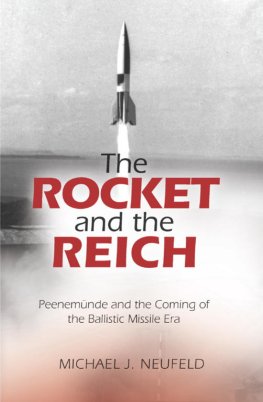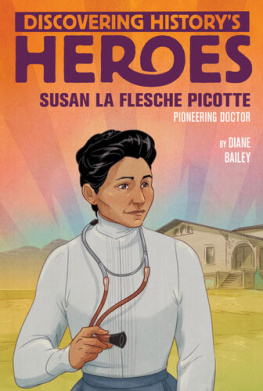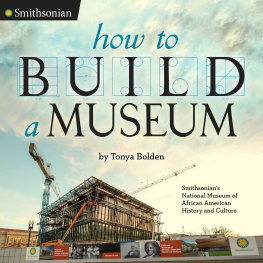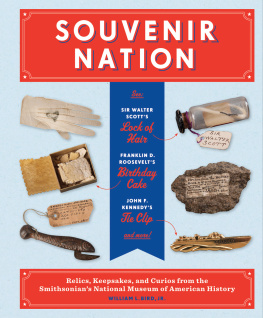MILESTONES OF SPACE
ELEVEN ICONIC OBJECTS FROM THE SMITHSONIAN NATIONAL AIR AND SPACE MUSEUM
MICHAEL J. NEUFELD
WITH CURATORS FROM THE
NATIONAL AIR AND SPACE MUSEUM

Smithsonian
National Air and Space Museum
Washington, D.C.
In association with

First published in 2014 by Zenith Press, a member of Quayside Publishing Group, 400 First Avenue North, Suite 400, Minneapolis, MN 55401 USA
2014 Zenith Press
Text 2014 Smithsonian National Air and Space Museum
All photographs are from the authors collection unless noted otherwise.
All rights reserved. With the exception of quoting brief passages for the purposes of review, no part of this publication may be reproduced without prior written permission from the Publisher.
The information in this book is true and complete to the best of our knowledge. All recommendations are made without any guarantee on the part of the author or Publisher, who also disclaims any liability incurred in connection with the use of this data or specific details.
We recognize, further, that some words, model names, and designations mentioned herein are the property of the trademark holder. We use them for identification purposes only. This is not an official publication.
Zenith Press titles are also available at discounts in bulk quantity for industrial or sales-promotional use. For details write to Special Sales Manager at Quayside Publishing Group, 400 First Avenue North, Suite 400, Minneapolis, MN 55401 USA.
To find out more about our books, visit us online at www.zenithpress.com
Digital edition: 978-1-62788-203-3
Hardcover edition: 978-0-7603-4444-6
Library of Congress Cataloging-in-Publication Data
National Air and Space Museum.
Milestones of space : eleven iconic objects from the Smithsonian National Air and Space Museum / Michael J. Neufeld, editor.
pages cm
Includes bibliographical references.
ISBN 978-0-7603-4444-6 (hardback)
1. Astronautics--United States-Equipment and supplies--Pictorial works. 2. National Air and Space Museum--Catalogs. I. Neufeld, Michael J., 1951- editor of compilation. II. Title.
TL506.U6W376 2014
629.4074'753--dc23
Editor: Elizabeth Demers
Design Manager: James Kegley
Layout: Diana Boger
Cover Designer: Jason Gabbert
Design: Karl Laun
On the front cover: Neil Armstrongs A7-7 spacesuit. NASA
Michael J. Neufeld
Martin Collins
James E. David
Thomas C. Lassman
Hunter Hollins and Allan Needell
Cathleen S. Lewis
Stuart W. Leslie and Layne Karafantis
Roger D. Launius
Roger D. Launius
Valerie Neal
David H. DeVorkin
The National Air and Space Museum on the National Mall at dawn. NASM
The Museums Steven F. Udvar-Hazy Center at dusk. NASM
FOREWORD AND ACKNOWLEDGMENTS
T HIS BOOK PRESENTS a capsule history of the U.S. space program through eleven key artifacts held by the Smithsonians National Air and Space Museum (NASM). It does not pretend to be comprehensive, but we, the chapter authors, feel that these iconic objects represent the major accomplishments and programs of the United States in space. With one exception, these essays are by the curators in the Space History Division, who currently have the artifacts in their collections. The essay on Skylab was contributed by Stuart W. Bill Leslie of Johns Hopkins University, who was the museums Charles A. Lindbergh Chair in Aerospace History in 201213, and Layne Karafantis, one of his graduate students. In addition, one sidebar to the Friendship 7 essay was adapted from a museum web publication by Teasel Muir-Harmony, a graduate student at MIT and a former fellow and employee, who kindly gave her permission.
The authors would particularly like to thank Edgar Durbin, a volunteer in the Space History Division, who took on the major job of assembling the photographs for the chapters. He did extensive picture research, and he worked to secure higher-resolution images when possible. He also took the responsibility of uploading the final versions of the text and picture files to the publishers website. The amount of work he contributed to the final product was far more than what one would expect of a volunteer. He has made an outstanding contribution.
We also would like to thank Trish Graboske, the museums publications officer, and Paul Ceruzzi, the chair of the Space History Division, for initiating this project. Moreover, the NASM Archives Division, headed by Marilyn Graskowiak, had a central role in supplying many of the photographs in the book. The chief photo archivist, Melissa Keiser, was particularly helpful. Two of NASMs photographers, Dane Penland and Eric Long, shot new images of artifacts for this book, and they and Mark Avino also took virtually all of the older object portraits. Stamatios M. Krimigis of the Johns Hopkins University Applied Physics Laboratory provided helpful advice on the Voyager Interstellar Mission. Finally, Jane Odom, chief archivist in the NASA History Office, and other NASA employees, were very helpful to Edgar Durbin and the authors in their research.
Washington, D.C.
January 2014
Friendship 7 in the Milestones of Flight gallery at the National Air and Space Museum. NASM
O N FEBRUARY 20, 1962, astronaut John H. Glenn Jr., became the first American to orbit Earth. He made three trips around the world in Friendship 7, a small spacecraft weighing barely more than a ton and a half, which had been hurled into orbit by an Atlas intercontinental ballistic missile (ICBM). Glenn was the fifth person in space, following two Soviet cosmonauts who had orbited and two American astronauts who had made suborbital trips of fifteen minutes. Because he was the first to match the Soviet achievement of orbiting, his fame in the United States quickly eclipsed even that of the first American in space, Alan B. Shepard. As a result, Friendship 7 was chosen for the Milestones of Flight gallery at the National Air and Space Museum when it was opened in 1976not Shepards Freedom 7.
Project Mercury, the name given to the initiative to put an American in orbit, had its origin in the immediate aftermath of the Soviet Sputnik surprise of October 4, 1957. The orbiting of a satellite immediately legitimized the Soviet claim of having tested an ICBMthus making the nuclear threat much more real.













